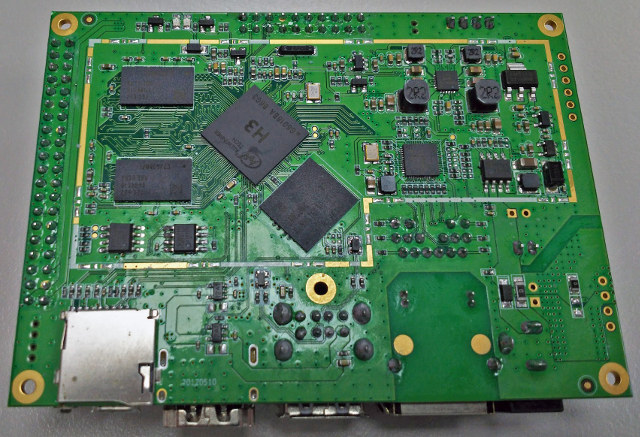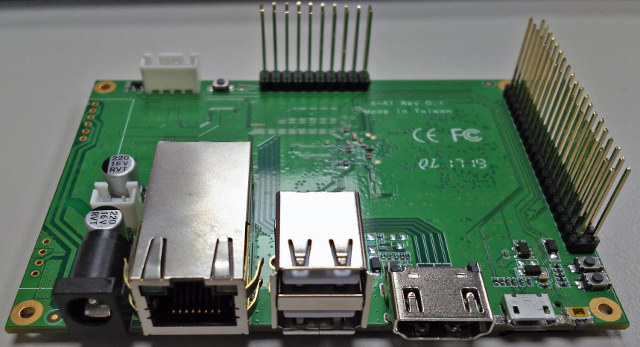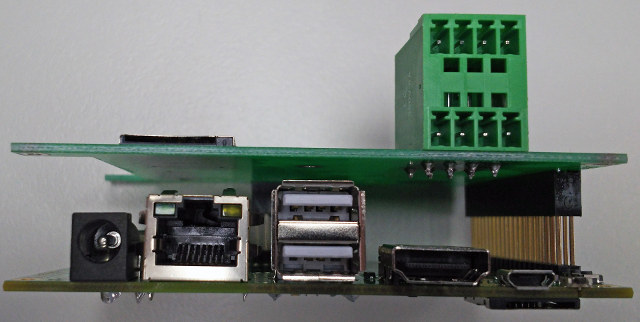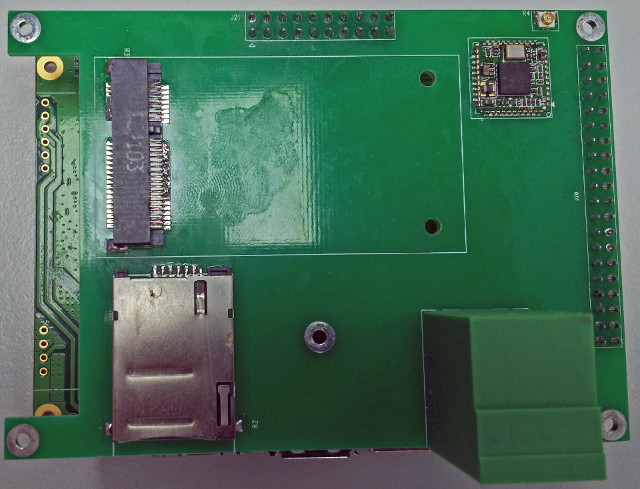These days developer boards are a dime a dozen, but Taiwanese ACT Power has taken a different approach from most companies out there by making their addition production ready. The Project-X A1 is the first in what is expected to be a series of boards that will utilize the same mezzanine board connectors, to make it easy to change hardware platforms over time.

The board on display at Computex is still an early prototype and some things will change before the final product launches. Specification wise we’re looking at:
- SoC – Allwinner H3 quad core Cortex A7 processor @ 1.2 GHz with Mali-400MP2 GPU @ 600 MHz
- System Memory – 1 GB DDR3 Storage
- 8GB eMMC flash, SD card slot
- Video Output – 1x HDMI 1.4a up to 4K @ 30 Hz
- Audio Output – HDMI, I2S via pin-header
- Connectivity – Gigabit Ethernet with optional PoE support
- USB – Two full size USB ports, 1x micro USB OTG port
- Expansion headers – 40-pin “common” header to Project-X boards, 20-pin header for 10/100Mbps Ethernet, serial port and chassis buttons.
- Debugging – 4-pin serial console header
- Misc – 2x LEDs for power and status, rear reset button, power and UBoot buttons.
- Power Supply – 12V via barrel plug or internal 2-pin header, optionally via PoE.
- Dimensions – 100×72 mm (Pico-ITX)
- Weight – ~60 grams

Although the hardware itself doesn’t distinguish the A1 board from many of its competitors, the plan is to offer a range of mezzanine modules for the expansion header. The ones pictured are only dummy mockups that were done for Computex, but it gives an idea of what’s being developed. The basic mezzanine board is simply a pin-header converter that allows to use of Raspberry Pi hats, although this would require some software re-jigging of the GPIO’s to make things work. The second board adds Wi-Fi as well as the option to add a 3G/4G USB only mini PCIe card. This version also has an industrial serial port header on it. An “IoT” friendly option and various industrial automation solutions are also planned to be offered.

Unlike most expansion headers, the Project-X header has support for USB 2.0 and 12V power, which means that those looking to develop their own mezzanine boards can add things relays and various USB devices without worrying about about having to use external connectors. The secondary connector allows for the addition of a 10/100Mbps Ethernet port, a third serial port (the 40-pin connector supports two already), as well as connect chassis LEDs and buttons. In the dummy boards this connector is interfacing with the mezzanine boards, but this is unlikely to be the case for many production solutions.
Courtesy of its Pico-ITX form factor, the Project-X A1 should be pretty straightforward to use in commercial products without the need of a highly customized housing. ACT Power is planning to release an Intel based version of Project-X later this year, but didn’t share details on which CPU would be used. The expansion header specification will also be shared closer to launch and ActPower will work with any potential customers to develop custom mezzanine boards. Unlike many development boards, this is not an open source project, but support for Ubuntu and Debian is expected.
Support CNX Software! Donate via cryptocurrencies, become a Patron on Patreon, or purchase goods on Amazon or Aliexpress





